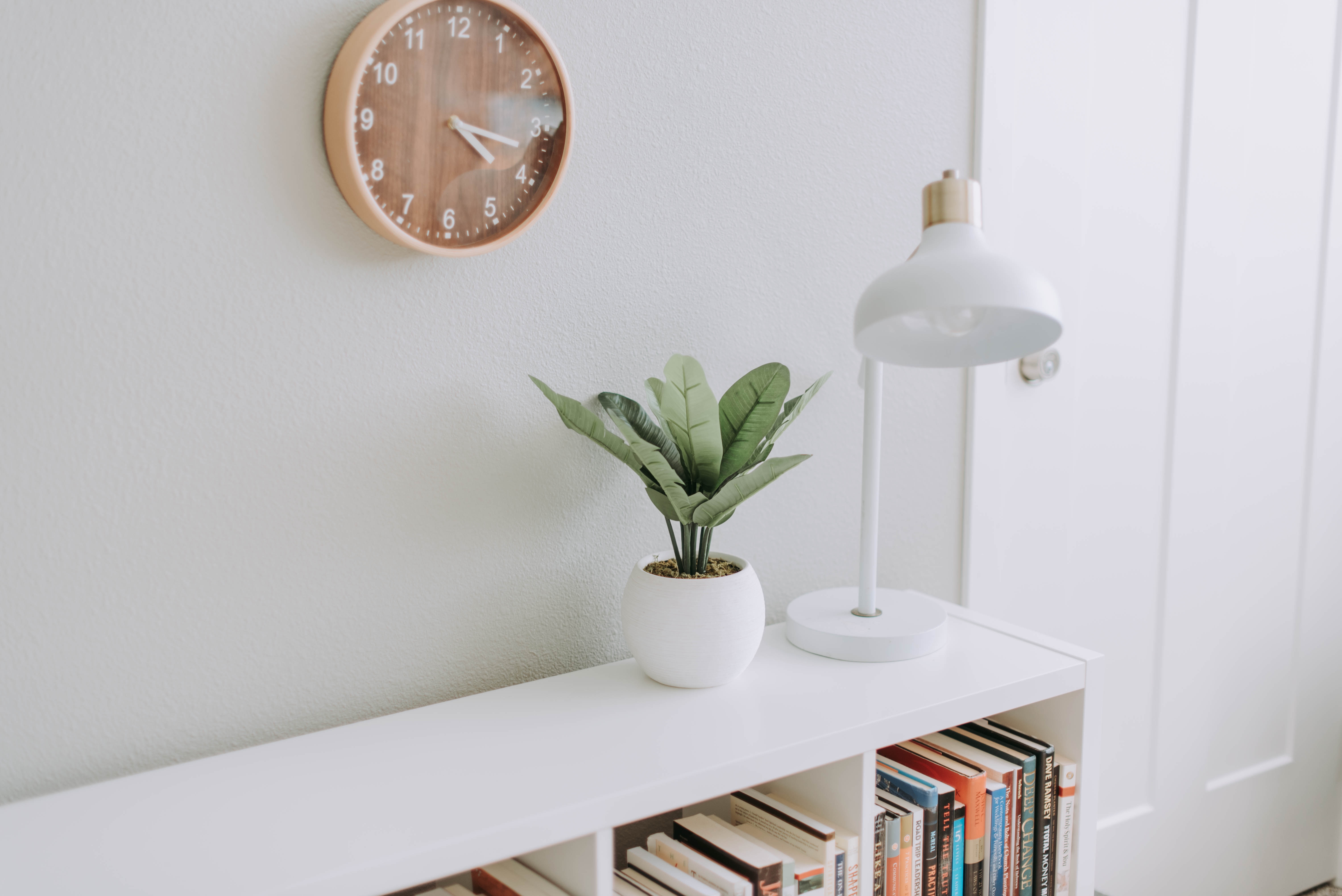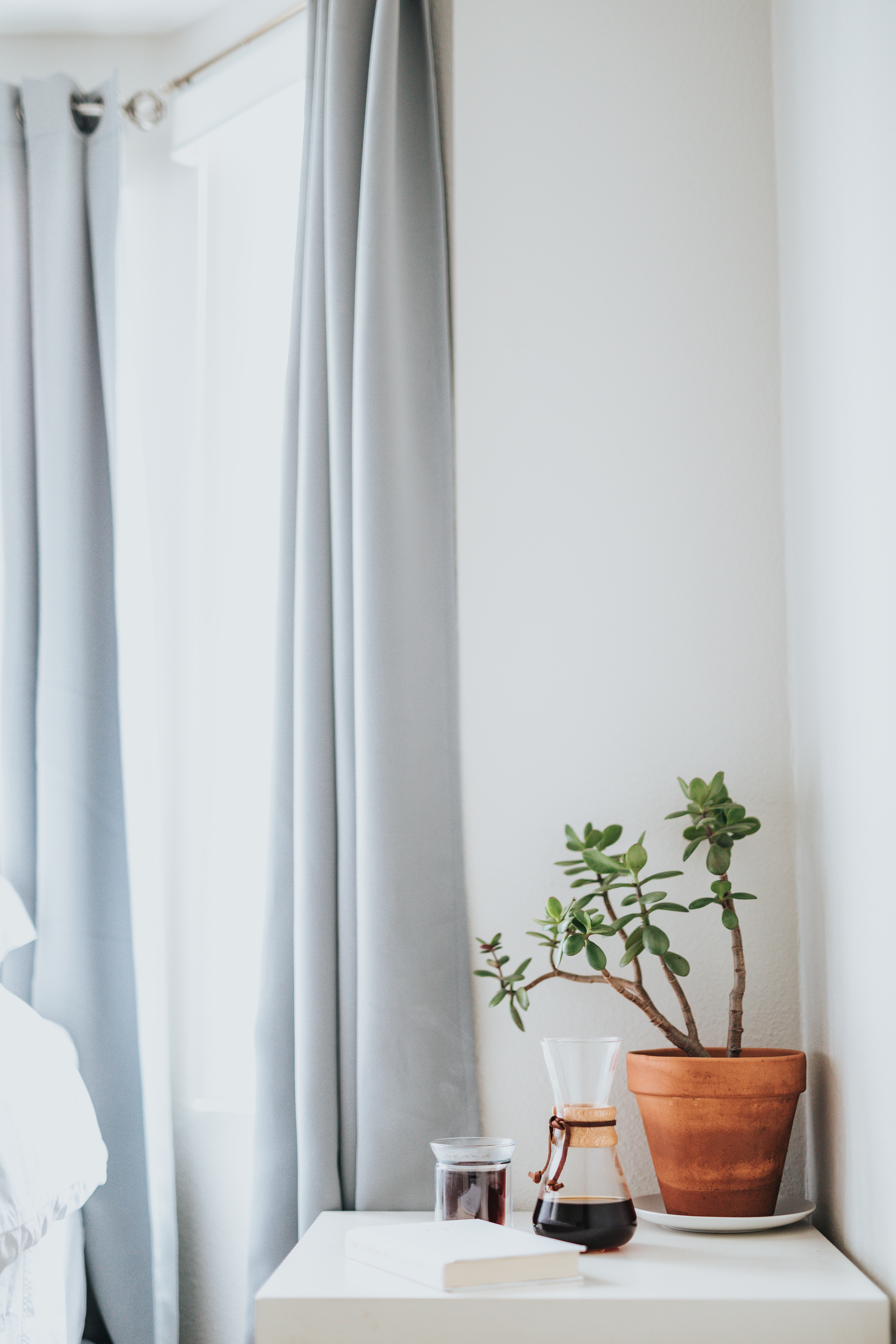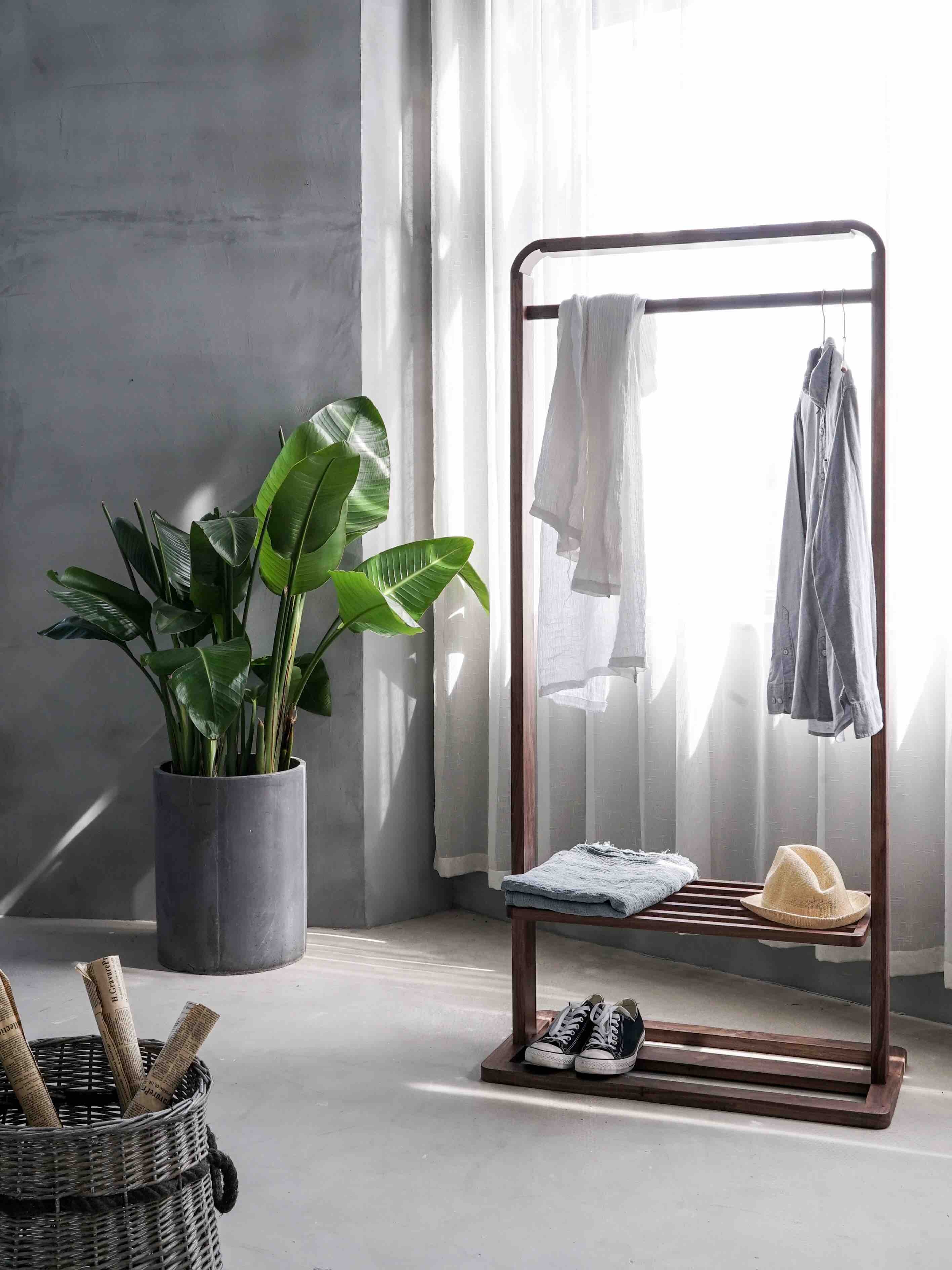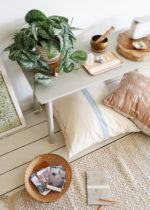
Just like a clear inbox on a Monday can make you feel more efficient, organized, and ready to take on the workweek, a well-organized home and space can help you feel the best version of yourself – more efficient, productive, organized, and even healthier! After all, how can you be happy and productive when your kitchen sink is piled high with dirty dishes, the chair in your room is overflowing with clothes, or your fridge is filled with expired food? There’s no denying that clutter is anxiety-causing and overwhelming, which is why it’s necessary to declutter your home for your physical and mental health, and in order to function at the best version of yourself.
But let me tell you, decluttering is hard. It is human nature to keep collecting stuff and filling all available space in our homes and sometimes even beyond. We buy things and then start forming an emotional attachment to it. It’s amazing how many piles of things can accumulate in the smallest of places if you’re not careful. In the last few years, sustainability and minimalism have become new lifestyle mantras, and Marie Kondo’s of the world have made decluttering popular. But, if you’re never tried your hand at it, you might wonder what decluttering is all about.
Apart from giving us more space: to think, work, or even dance around; it forces us to take stock of what is actually important. By only keeping things that ‘spark joy’ and purging the rest, our priorities change. It makes cleaning easier, and we value and are aware of everything that we own.
Alternatively, living in the midst of clutter can have a negative impact on us. It causes us to feel discontent and unhappy as rest and relaxation becomes difficult, and our home goes from being a safe place and sanctuary to the cause of stress. Keeping up with housework takes longer (more to clean and sort through), and the larger our mess, the more energy is required to work through it, making your to-do list seem never ending. Clutter is also known to cause anxiety, impair our sleep and reduce focus.
Apart from the mental impact, clutter can affect our gut health as well. There is a connection between our gut and brain, and living in an organized space, our energy increases as the mind is less cluttered and at peace. This results in the disappearance of symptoms like bloating, reflux, poor digestion and inflammation. A cluttered home also allows for the buildup of dust, dirt, pet hair and mold. The pathogens and toxins contained can be a disaster to our health causing allergies, respiratory conditions, inflammation, and eventually chronic illness.
Even though it might seem overwhelming at first, think of decluttering as a part of self-care. Yes! Self-care isn’t just bubble baths, manicures and massages. It includes doing things to improve our life, wellbeing, health and happiness – and organizing your space is just one step of the journey.
If you’re newly motivated to declutter, but you don’t know where or how to start, we’ve got you covered. We’ve rounded up some of the best practices to help you declutter your life and home – simple tips to help you get started without feeling too overwhelmed at first. Just remember that decluttered living is a lifestyle and not a one-time process. You need to take your time, continuously declutter, as well as consider and evaluate everything that you bring into your home – as what works for you now, may not in the future.

Here are some of the best practices to declutter your home and life:
Start by removing the obvious trash. Look for packaging, broken bits that you can’t be fixed or have no use, old paper trash, etc. in every area you organize. Throw away the bills that don’t need to be saved, visiting cards so old that the businesses might not be running any more, user manuals of devices you no longer own. These are easy decisions to make and will get you comfortable decluttering.
Once the trash is removed, move items to their designated area. For example, is your favorite romance novel sitting in your kitchen drawer? It may be better suited by your bedside drawer, or on your bookshelf. Are random papers, mail, receipts, bills accumulating in all parts of your home? Assign a designated tray or box to hold all of it. Is there a bath set in your room that you recently bought but keep forgetting to keep in the bathroom? It’s a good time to place it there.
Once everything is in its designated area, start decluttering your counters. You ideally want a house where all the flat surfaces are clutter-free with only the essentials. Pick one shelf, and tackle it first. Find homes for loose papers, the junk, or anything else that’s taking up space. Start small with one counter and keep expanding until your no clutter zone envelopes the whole house.
Now that the house “looks” decluttered, it is time for the actual hardwork to begin.
Pick a shelf, or a drawer. It really doesn’t matter which one, just don’t tackle the entire wardrobe, dresser, or bookshelf in one go. Divide and conquer. Take every single thing out of it, and start the difficult task of deciding what to keep and what to purge. Keep only the things that you know you will use, or are of value to you. As Marie Kondo says, for each object, ask yourself “does it spark joy?” and then decide whether to keep/purge.
When you take everything out of its place, it gives you a better perspective of whether you need it or not, so don’t just take out things that you know you don’t need, take everything out and move from there. Once you’ve wiped down the shelf and cleared all the non-essential items, put back everything. Keep similar items together, creating organization systems that work for you – only then will you end up following them long term.
ProTip — When you get to your medicine cabinet, makeup drawer, or the pantry, remember to check the expiry dates of what you have and throw away everything that is expired.
Use the three-box method. While decluttering, confusion is ok as it may be difficult for you to not be certain if you would like to keep something or not. Create a “maybe” box and take the stuff you don’t use, but think you might want or need someday, and put it in there. Store the box somewhere and have a look at it after 5-6 months for a fresh perspective. Keep anything that you really need, and consider discarding or donating the rest.
Simultaneously, create a box for charity. Its easier to donate once you are done decluttering if everything is already in a box, and it might be easier to get rid of things if you know that it will eventually go to someone who needs it. There are a lot of charities that will willingly take old clothes, bed linens, toiletries, first aid, furniture etc. Chances are that with slight effort, you will be able to find a good second home for everything that no longer serves you.
Finally, create a tossing box. This is everything that is junk, or broken beyond repair, and cannot serve purpose in any way. This is for stuff that goes straight to trash, but be mindful of what you throw in the trash, as it will eventually go into landfills, and try and donate as many things as possible.
Organize your closet. When it comes to organizing your closet, try everything you own. It is estimated that we generally only wear 20% of our wardrobe 80% of the time. Purge anything that does not fit right, does not make you feel confident, or happy. We often make impulse purchases and then don’t end up wearing it. Get rid of everything you don’t truly love or need – you could swap gently loved items with a friend or sibling, pass on things you no longer use to your house help, sell luxury items to vintage clothing stores, and donate the rest.
Create zones for everyday essentials, formal wear, etc. Store your seasonal clothes in boxes so that they don’t crowd the rest of your wardrobe. Hang, fold, stack, or pile like items together to keep an organized system. Make sure things in pairs like socks are kept together. Check for tears, loose threads, missing buttons and repair what’s required.
If you have anything that you are emotionally attached to, dedicate a section of your closet for it or make a special box, and don’t keep those items with the everyday stuff.
Declutter your kitchen. Kitchen organization should always start in the pantry and refrigerator by checking expiry dates and getting rid of stuff that’s past its prime. The same rules for clutter-free counters apply too. What you can also do is streamline your storage with glass jars that are neatly labeled. Removing all excess packaging makes it easier to see what you have in stock so you use it up, and makes restocking easy from the bulk bins at supermarkets.

A few other tips to help you declutter:
While decluttering can seem like an uphill battle, tackling one area at a time is an effective way of breaking it up into smaller, manageable tasks. Start small, by tackling one shelf/drawer at a time – give only 15 minutes of your day if that’s all you can manage.
Try taking before and after photos of your space – once you know how beautiful it looks when decluttered, you might be inspired to stick to it!
Visualise everything. Before tackling a room, visualize the space – think of what goes where, and it’ll make it easier when you’re putting back the items.
Finally, tackle the root cause of clutter: decluttering isn’t a permanent solution because clutter just comes back as we buy more stuff, so consider nipping the tendency in the bud. Don’t just buy everything that you like or want. Instead shop for your necessities, and prioritize quality over quantity.
For anything frivolous you may want to buy, make a list and date it. If you still want that item in 30 days, or if you felt you could have benefitted with having it during that time, then go ahead and buy it. Remember the point is not to make yourself go without or suffer, the point is to own only the things that are useful to you. And don’t get rid of things just to get rid of them. There is no point in throwing away something now that you might repurchase in the future. Ultimately, decluttering is about being conscious of what you own and not being wasteful.
Now that you’ve got a sense of how decluttering works, try tackling a small area of your home using these tips. A healthier, happier, and clutter-free home awaits you!






